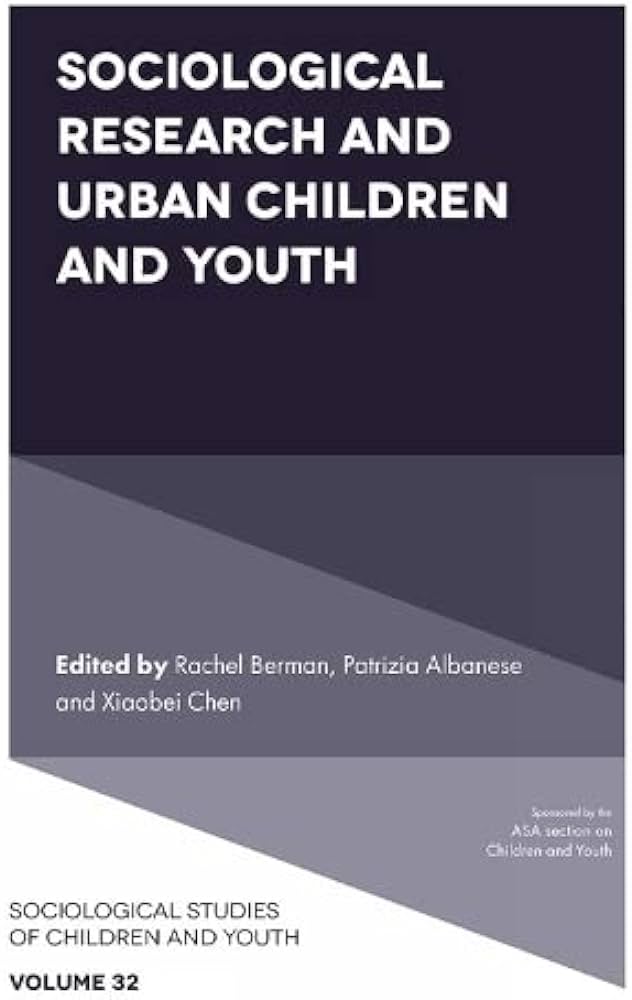Interview with Rachel Berman, Patrizia Albanese, and Xiaobei Chen about their edited collection, Sociological Research and Urban Children and Youth
Our members, Profs. Rachel Berman and Patrizia Albanese (Toronto Metropolitan University, Canada), along with their co-editor Prof. Xiaobei Chen (Carleton University, Canada), talk about their new collection, Sociological Research and Urban Children and Youth (Emerald, 2023).

Q: What is this edited collection about?
Sociological Research and Urban Children and Youth is the latest contribution to Emerald’s series in Sociological Studies of Children and Youth. In this collection, we bring together cutting-edge work that addresses children’s and youth’s urban living experiences as well as the social, political, and ecological realities that accompany these experiences. Featuring contributions from Australia, Canada, Iran, the U.K., and the United States, the authors of the nine chapters take up core analytical and conceptual issues ranging from social construction and relationality, to citizenship and belonging, to power, structure, and agency and the book is divided into three sections accordingly.
In the first section, the chapter that opens the volume is by Angela Oulton and Susan Jagger who examine the school garden movement in urban settings in North America using historical texts and contemporary discourse. They demonstrate how the school garden has been neither welcoming nor accessible for all children, and how the movement constructed/constructs childhood in particular ways. In the second chapter, Alice Leyman’s UK study engages with neurodiverse youth living in urban spaces and reveals that computer gaming and Cosplay – dressing up as a character from a work of fiction (such as a comic book, video game, or television show) – fostered connections with like-minded individuals. The third chapter by Lucas Walsh, Cathy Waite, Beatriz Gallo Cordoba, and Masha Mikola includes discussion of a large-scale, mixed-method study undertaken in Australia that explores young people negotiating troubled transitions during the pandemic, with a focus on how young lives in the city were digitally mediated.
The next section on citizenship, space and belonging opens with a chapter that explores children’s exclusion from the urban planning process in Iran by Bahar Manouchehri, Edgar A. Burns, Ayyoob Sharifi, and Sina Davoudi where the authors approach this age-based exclusion as a structural pattern in Iranian society and reveal several obstacles to including children’s perspectives in planning. Linda Jane Shaw’s chapter “Spaces for Play: Intergenerational Community Development of an Urban Park in the East Midlands of England” discusses a community development project that intentionally promotes cooperation between generations through playwork in a multi-ethnic context. Next, in Alex Bing’s chapter “Educational Streaming, and Identity Formation Among Stem-bound Asian Canadian Youth” he examines how STEM-based streaming articulates with anti-Asian racism in Canada’s public school system to shape academic as well as identity options available to Asian Canadian youth.
In the final section on power, structure and agency, the chapter by Christine Emeran explores how public high school students in the US navigate their marginalized position as minors by examining case studies of protest by students who organize to overturn book bans. In her chapter, Sydney Chapados demonstrates how government strategies said to be aimed at ending child poverty in the province of Ontario, Canada, are used to justify community revitalization efforts that displace low-income populations, and which ultimately prioritize and benefit private market investment. This volume closes with a chapter by Pamela Wridt, Danielle Goldberg, Yvonne Vissing, Kristi Rudelius-Palmer, Maddy Wegner, and Adrianna Zhana who provide a historical analysis of the UNICEF led collective impact intervention of the Child Friendly Cities Initiative globally and in the United States.
Q: What made you initiate this volume?
Given that almost a third of the 4 billion people living in urban areas today are children, according to the United Nations, and that by 2050, 70 percent of the world’s children will live in cities, we sought to put together a volume that engaged with the following questions:
1. How has recent sociological work engaged with children and youth living in cities around the world?
2. What does a focus on children and youth in an urban context mean for researchers working within a variety of sociological frameworks?
3. How have children’s and youth’s experiences shaped and been shaped by the diverse urban scapes and contexts in which they live?
An excerpt from the introductory chapter:
While urban children are depicted as victims of their locale, urban youth are more often than not depicted as social problems, contributing to the “danger” of cities. Adding to these perceptions a global pandemic that had children and youth confined to the indoors, learning virtually from home, with once bustling streets turned desolate, the city looks scarier and more alienating than ever. However, as Christensen and O’Brien (2003) remind us, studies of cities and childhood should ‘[move] beyond ideas of the city as a problem or children as a problem,’ as how ‘ordinary city childhoods are formed, lived and experienced’ (p. xvi) also need to be studied and understood.
Indeed, cities offer access to opportunities for civic engagement, greater diversity of peoples, and increased access to services. Notably, even the once declining American cities of the 1960s, 1970s, and 1980s have been experiencing population turnaround and growth since the 1990s, with amenities, including schools for families with young children, said to be improving in central cities in recent years (Sander & Testa, 2015).
Yet many questions remain. What is the role of children and youth in determining such amenities, in the creation of services and policies, what are their opportunities for civic engagement? Where is their voice in city building?
Volume 32 of Sociological Studies of Children and Youth explores some of the ways children and youth co-construct, contribute to, are constructed by, navigate, negotiate, and resist their urban social worlds and urban relationships. While not all authors in this volume make their academic home in sociology, all of the chapters take a sociological approach in that attention is paid to large-scale social processes, structures, and relationships.